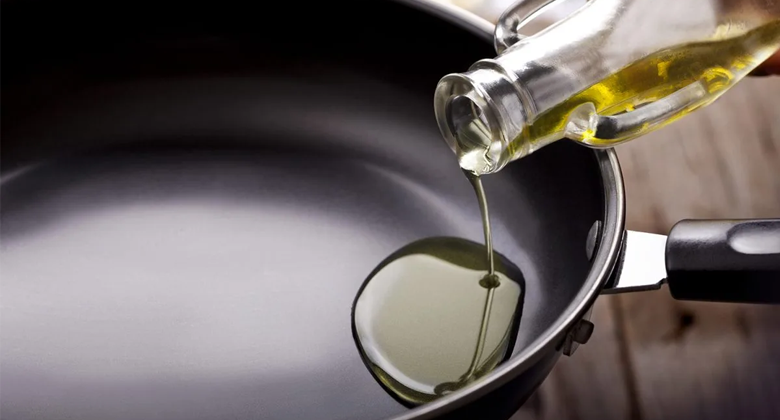Image Source: FreeImages
Nonstick pans are excellent at keeping food from sticking and are often praised for their ability to wick away grease. But do they play well with others? Olive oil, while perfectly safe to use in other cooking applications (it’s great as a salad oil or in substandard oils), can hurt nonstick pans.
When combined with the natural vegetable oils found in nonstick pans, it can cause them to Break-Down and Leach Toxins into the Food! So what’s the deal with olive oil and nonstick pans? Are they a good mix? Does replacing your existing pan with a new set of nonstick help or hurt your health? Let’s find out!
What is Olive Oil?
Olive oil is a combination of two plant extracts: Extra-virgin olive oil and olives. The result is a light, mild cooking oil that is almost tasteless. Olive oil has a high smoke point, which means it can withstand high heat without becoming too warm or cooking the foods it is used in. It is used in lotions, body butter, salad dressings, cooking, and in more stringent applications as a foodstuff.
What does Olive Oil Do to a Nonstick Pan?
First and foremost, when cooking with olive oil, do not overpack your house. The recommended olive oil pack level is between 2 and 4 tbsp per day. And while it is true that excess oil will taste bad, it is also true that not using enough oil can lead to poor-tasting food.
When cooking with olive oil, you want to pack the pan to prevent the oil from spilling and for it to reach a temperature where it can properly leach out the toxins from the food.
When cooking with olive oil, reduce the amount of oil that you use rather than putting more in. This is because more oil means more surface area to absorb the oil’s toxins- the healthier choice!
The Truth about Olive Oil and Nonstick Pans
Despite what you might have been led to believe, olive oil and nonstick pans are not a great mix. The truth is that when it comes to using nonstick pans with olive oil, it is better to be safe than sorry.
In general, when it comes to using nonstick pans with olive oil, you should stick to milder oils such as avocado, grapeseed, corn, peanut, soybean, sesame, or olive. Some nonstick pans are made with a “grease protection” coating, which can affect the way you cook with olive oil.
Are nonstick pans a Good Idea?
While the idea of replacing your existing old nonstick pan with a new set of nonstick pans is good, the execution can sometimes lead to problems. The first problem is compatibility. Some nonstick pans are made with an incompatible coating on the inside.
When you replace your existing nonstick pan with a new set of nonstick pans, you could be switching to an entirely different pan family with a whole new set of issues. For example, if you are changing from a Swedish pan to a Bakelite pan, you will likely experience oil spatter issues when using a Swedish pan.
This is because the Swedish pan’s oil coating has guard (mechanical) properties while the Bakelite coating will attract oil and cause a spatter.
Swedish pans also tend to be slightly heavier than your average non-Strip pan, so if you are looking for lightweight cooking, you may want to look elsewhere.
Conclusion The truth is that when it comes to using nonstick pans with olive oil, you should stick to milder oils such as avocado, grapeseed, corn, peanut, soybean, sesame, or olive. Some nonstick pans are made with a “grease protection” coating, which can affect the way you cook with olive oil.

